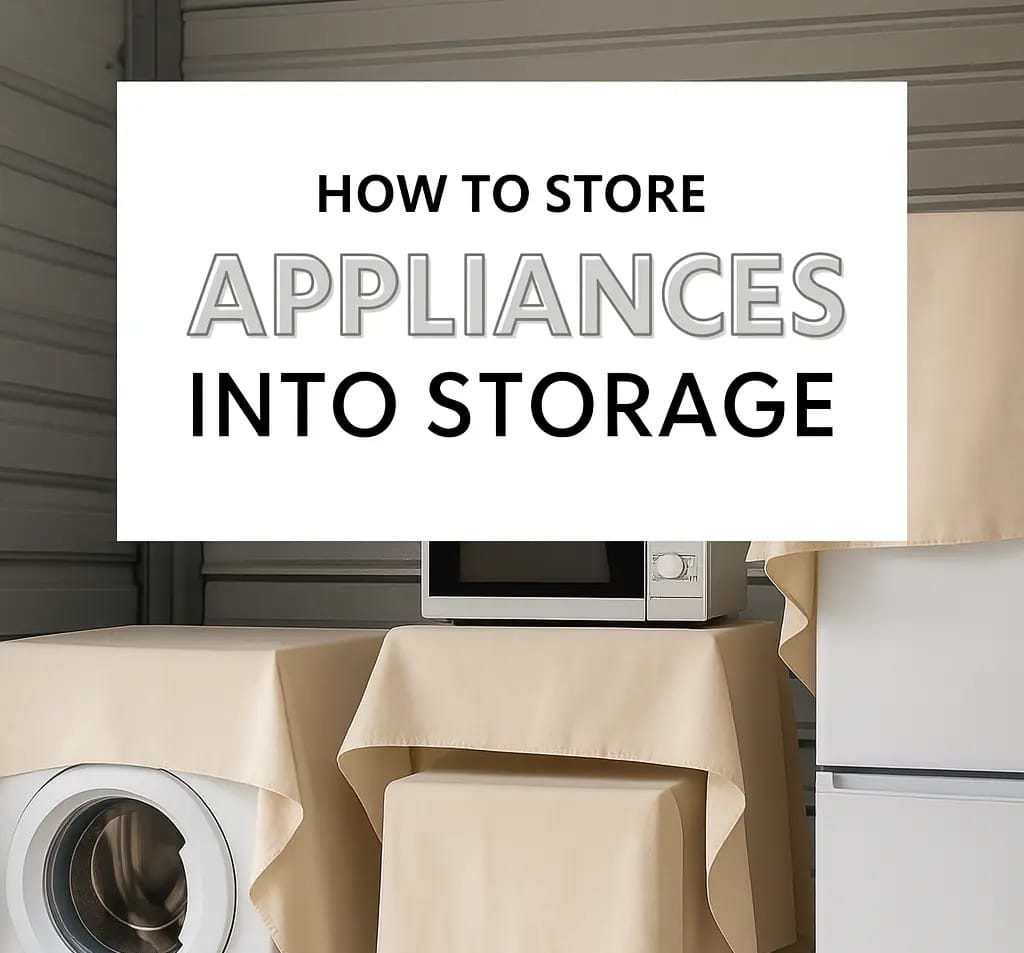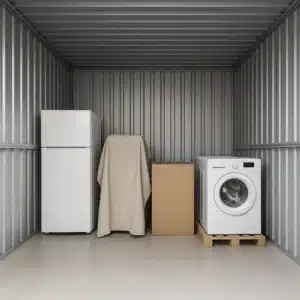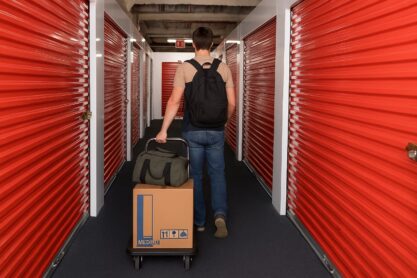If you’re moving, renovating, or clearing space for a while, you might consider storage. But storing appliances isn’t like packing clothes or kitchenware, they have water lines, motors, and internal components that need special care.
Sure, you could just toss them into a unit without cleaning or drying, but that’s a fast track to mould, damage, or a shorter lifespan. To save yourself the hassle (and the cost of repairs), we’ve put together this quick guide on how to store appliances the right way.
1. Take Photos Before You Start
Before unplugging anything, take a few clear photos of each appliance. This helps you remember how trays, hoses, and cables are connected. It also provides a record of the appliance’s condition, including serial numbers, scratches, or cosmetic marks.
Insurance companies typically recommend taking photos, or at least keeping an inventory, in case of damage, loss, or claims later on.
2. Drain All Water
Appliances that use water, i.e washing machines, and dishwashers need to be fully drained before storage. If not, all that leftover water can cause your appliances to become mouldy, or even freeze, damaging internal parts.
- Disconnect hoses and let them drain completely
- Empty water tanks, filters, pumps, or drip trays
- Defrost fridges and freezers and wipe away excess water
Take your time here. If even some moisture seeps into wiring or internal components, it could cause short circuits, blown fuses, or corrosion. In many cases, costs for electrical repairs can range between £60 and £250, depending on the damage.
3. Clean the Appliances and dry thoroughly
Once drained, give the appliance a thorough clean. This ensures they won’t emit any odours, or attract pests once in storage. Be sure to remove any food, grease, detergent, or lint, and wash trays, drawers, and compartments separately.
Once washed, follow these tips to properly dry your appliances:
- Towel-dry all surfaces inside and out
- Pay extra attention to seals and tight crevices
- Let drawers, trays, and hoses air dry fully
- Leave doors open for a few hours before packing
Skipping this step is one of the quickest ways to end up with a mouldy or cracked appliance, even if it looked dry going in.
4. Pack Loose Parts and secure power cords
Loose parts are easy to misplace, and replacing them can be costly. UK appliance parts retailers estimate that a dishwasher basket or tray alone can cost £50 or more.
To keep everything together:
- Remove detachable items like drawers, trays, shelves, baskets, and hoses.
- Wrap fragile pieces in bubble wrap or towels.
- Store small parts in a labelled box or tape them securely inside the appliance.
Once that’s done, unplug the appliance and loosely coil the power cord to the back with a cable tie. If the plug does stick out, add some padding to protect it during transport.
You can also label the cord as a reminder not to plug it in immediately after moving, especially in the case of fridges.
5. Transport Your Appliances Carefully
Before moving day, carefully load your appliances onto your vehicle by using trolleys or sliders. Once in, secure appliances with straps, and keep them upright when possible. Incidentally, fridges should never be laid flat to avoid damaging the compressor.
If you’re hiring movers or using a collection service, ask if they handle appliances. Also, find out how they secure them.
6. Properly Pack Your Appliances Into Storage
Once your appliances are clean, dry, and ready, how you use the storage unit also plays a big role in keeping them protected. Some people even use storage for business purposes, which comes with its own set of rules.
- Keep all appliances upright and leave a small gap between the appliance and the wall for better air circulation.
- Wedge the doors slightly open using a towel to prevent mould and odours.
- Store trays and shelves inside the appliance or in a labelled box nearby.
- Place breathable covers on your appliances to avoid cosmetic damage, dirt and moisture exposure.
Optionally, you can place your appliances on pallets, bricks, or wooden boards. Storage unit floors can get damp over time, so elevating your appliances can help prevent moisture damage.
7. Inspect After the First Week
Don’t wait a month or two to check on your items. By then, mould or damage could already be setting in. Instead, pop in after the first week. That’s usually enough time for any smells, leaks, or moisture issues to show up, while still early enough to fix them before they get worse.
Additional Appliance Storage Tips for Your Storage Unit
Once your appliances are clean, dry, and ready, how you use the storage unit also plays a big role in keeping them protected. Here are some final tips from Henfield’s self storage experts to help keep things stress-free:
Use a Free Collection Service
Some storage providers offer pick up and return services for your items. This saves you from hiring your own van, paying a friend to help you load or driving there yourself. Henfield’s Click+Store service, for example, includes free collection, loading, and free delivery. All items are safely stored in one of our own warehouses.
Choose the Right Unit Size
Pick a unit too small and you’ll have to squeeze your appliances and potentially damage them. Choose one too big and you’re essentially paying for space you’ll never use. If you’re unsure, measure your items and ask your storage provider for advice or use their online space estimator.
Stack Items Safely
Always place heavier appliances like fridges or washing machines on the bottom and lighter ones on top. This prevents tipping, protects fragile parts, and makes better use of vertical space.
Leave Room for Airflow
Avoid pushing appliances right up against each other or the unit walls. Leave small gaps to help air circulate, which reduces the risk of mould and keeps moisture at bay.
Final Thoughts
Appliances aren’t cheap, and replacing them due to poor storage is an avoidable expense. With just a bit of planning, you can keep everything in great shape for whenever you need it again.
Need somewhere secure to store your appliances? Henfield Storage offers affordable, flexible storage in London and Sussex with options like Click+Store collection to make it even easier.
Frequently Asked Questions about Appliance Storage
Can you store a washer and dryer in a storage unit?
Yes, as long as you prepare them properly. Drain all the water, clean and dry everything, and keep them upright in the unit. Use a breathable cover and leave some space around them for airflow.
How long can you keep appliances in storage?
If they’re stored correctly (clean, dry, and protected from moisture) most appliances can stay in good condition for years. It’s best to check on them after the first week and then every couple of months.
Can I store large kitchen appliances like ovens or fridges?
Yes. Just make sure they are fully cleaned, unplugged, and completely dry. Avoid laying fridges flat during transport, and leave the doors slightly open in storage to prevent mould or bad smells.





